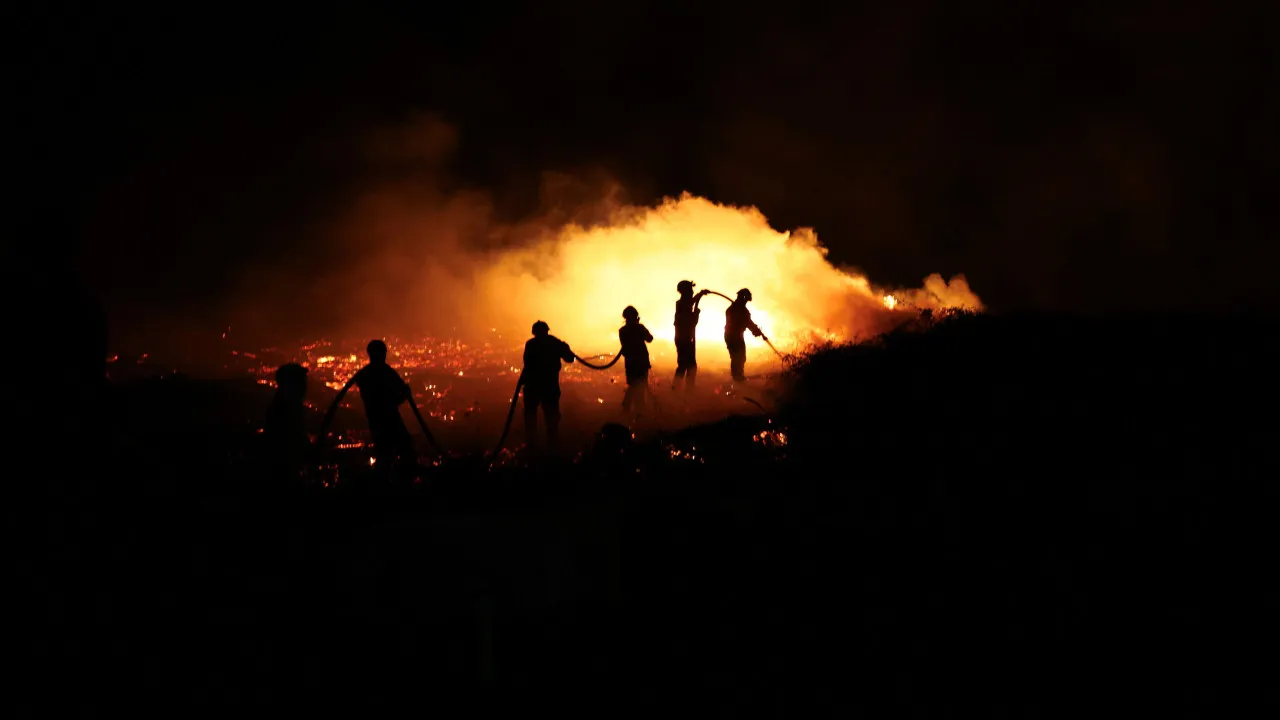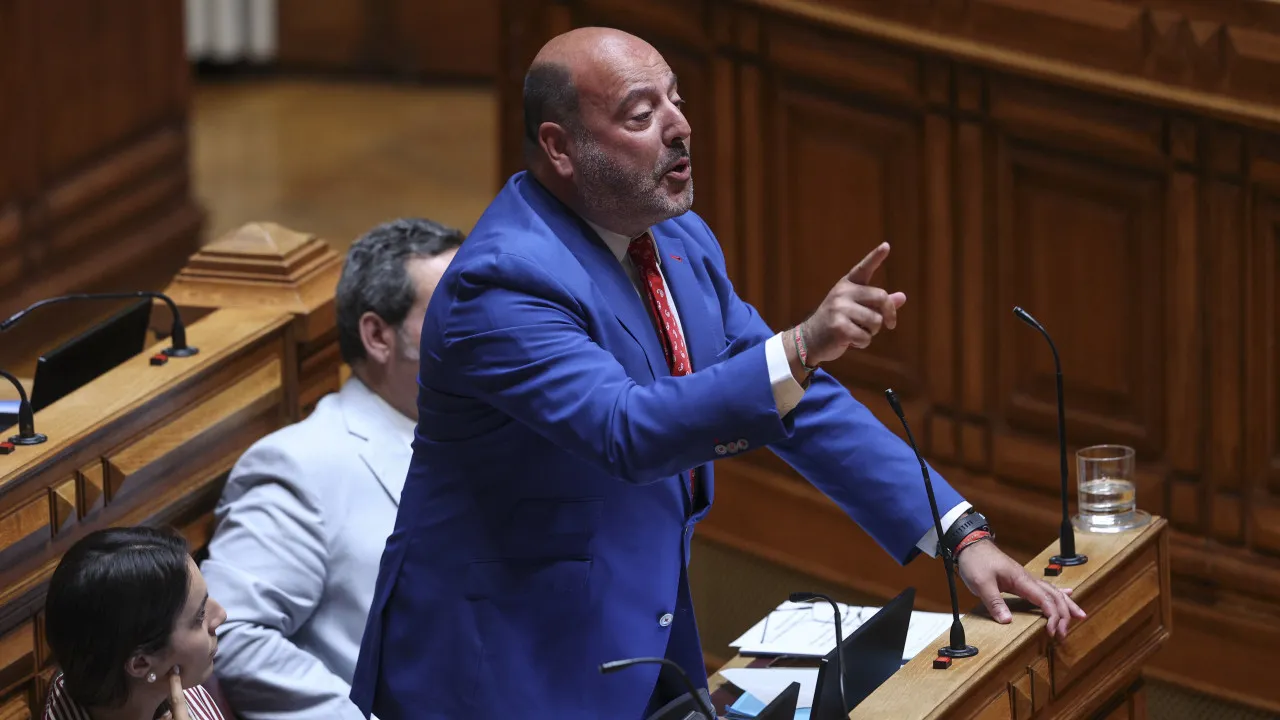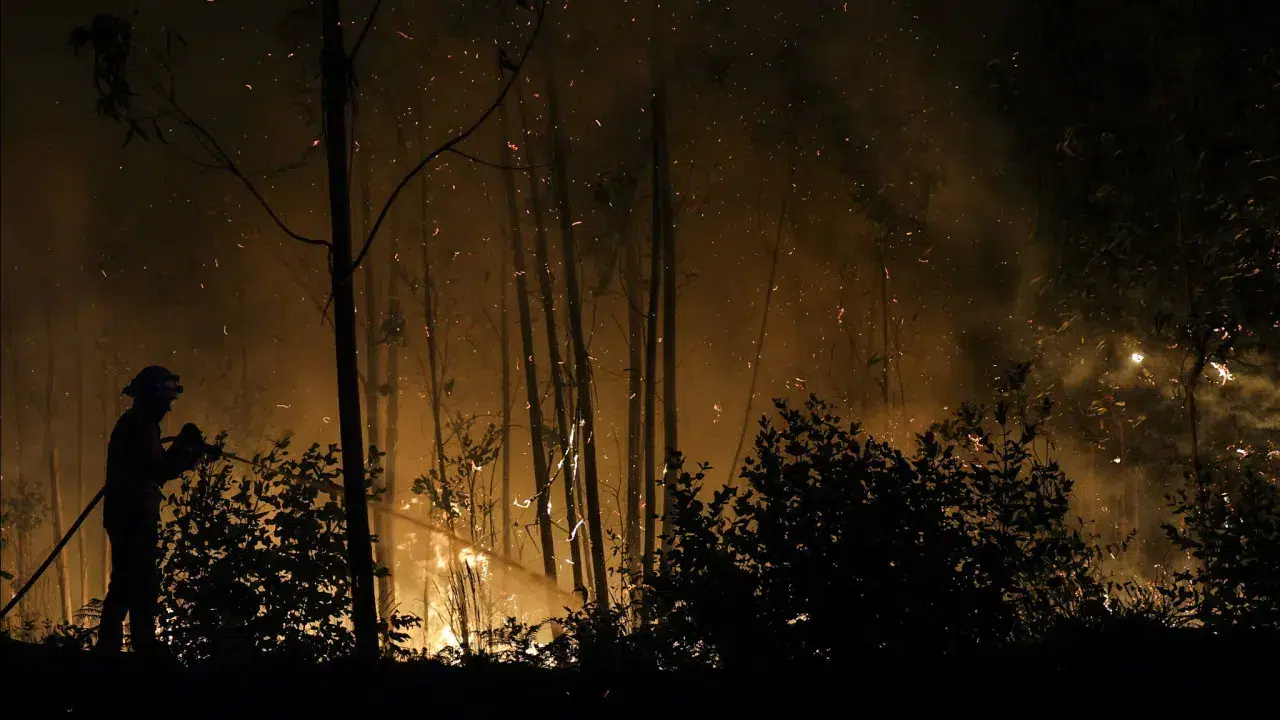
On the EN323 national road, in areas such as Pera Velha and Granja do Pavia, the only color against the blackened landscape is that of the houses. Residents reported that this was because people stayed awake for two or three days to protect their belongings.
“At our company, on the first night from Thursday to Friday, nobody slept. We started taking shifts because we couldn’t endure otherwise. There are eight of us, plus friends and family. That’s how we saved the houses; everything else was lost,” said Conceição Cerdeira.
Granitos do Paiva was saved by its employees, as indicated by the fact that everything surrounding it is burnt. The situation can be understood better by visiting the affected communities to grasp the fire’s impact.
“Pine forests, chestnut groves, many beehives—all gone,” was the grim summary.
Nearby, Ana Maria Santos noted that “a lot of what was supplemental income for many people was lost, and for others, it was their main livelihood.” She expressed hope for support for those most affected.
At 69 years old, Ana Maria Santos recounted witnessing several fires, mostly around Leomil, but never one like this. “It was burning everywhere simultaneously,” she said.
“How did it come from Sátão and reach here in just a few hours? How does it burn everywhere at once? How are there flames all around?” she questioned.
“If it weren’t for the residents with their belongings, hoes, and buckets, along with agricultural machinery, the outcome could have been much worse.”
Cristina Conde shared that “two chestnut groves I owned were completely burned.” One of these belonged to her grandparents and spanned a hectare of centuries-old trees. A second, six hectares in size, was new and anticipated its first abundant harvest but also burned entirely.
In the village of Nacomba, 76-year-old Alfredo da Costa has also seen “many big fires” but recalls the “fires of 1977 and 1990 as being much less intense than this one.” The speed and ferocity of the flames were unprecedented, he observed, noting that previous fires were actively fought and contained, unlike this one. Firefighters reportedly conserved water to protect homes.
“Ultimately, it was the local people who saved Aldeia de Nacomba, as the firefighters remained near the houses while the residents confronted the flames, preventing them from reaching the village,” he stated.
He argued that “instead of spending vast sums on aircraft, the government should allocate those funds to municipalities, which, in collaboration with local councils, could maintain clean and organized territories”—a move that would create more jobs and better protect villages through local expertise.
Firefighters reportedly followed orders from a commander unfamiliar with the area, suggesting a disconnect that complicated the response. “Had we been in charge of managing our land, such an incident might not have occurred,” he concluded.
The fire that reached Moimenta da Beira originated from two separate blazes: one on the 13th in Sátão (Viseu district) and another on the 9th in Trancoso (Guarda district). By Friday, these merged into a single fire spreading across 11 municipalities in both districts.
The affected municipalities include Sátão, Sernancelhe, Moimenta da Beira, Penedono, and São João da Pesqueira (Viseu district); Aguiar da Beira, Trancoso, Fornos de Algodres, Mêda, Celorico da Beira, and Vila Nova de Foz Côa (Guarda district).
This fire was brought under control by 10:00 PM on Sunday.




